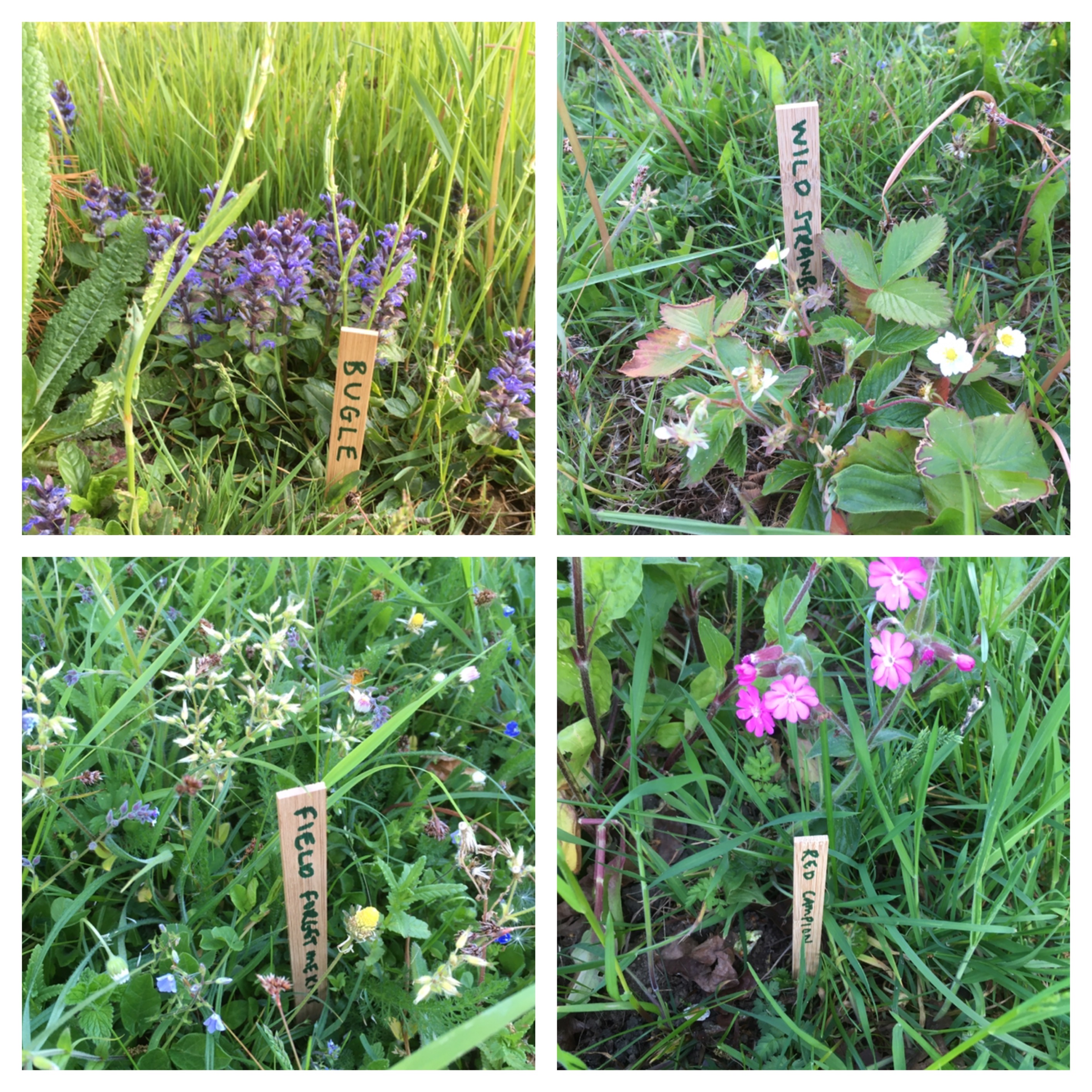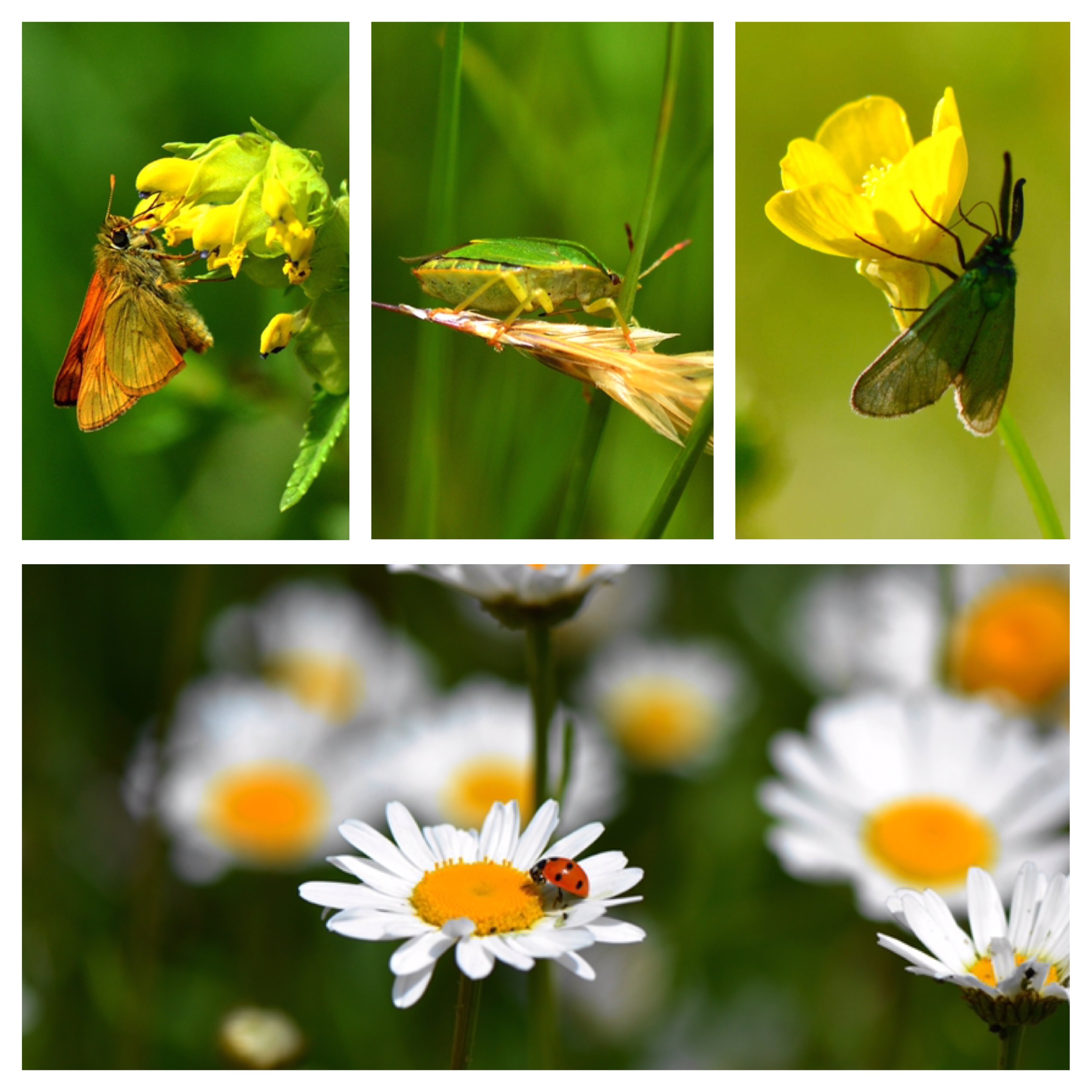Caring for the environment
Recycle and raise money for charity
The following waste items that the council doesn't collect can be dropped off in the storage bench outside the Reading Room:
- batteries; biscuit wrappers; bread bags; cheese; ccosmetics; Ferrero Rocher boxes; pens; Pringles tubes (not lids); printer cartridges; Marigold gloves; toothbrushes (inc electrical); water filters.
These are recycled by Terracycle and raise money for healthcare workers in Malawi via the charity Medic to Medic.
Making Space for Nature
Concern about loss of habitat and declines in wildlife led Grimstead Parish Council to support an initiative by the village nature group to increase biodiversity: the Nectar Bars. In October 2019, work began to scarify four strips around the edge of the village green, sow wildflower seeds and leave them unmown for a year. To the group's delight, the hard work paid off...
 Since then over 40 different wildflower species have been recorded growing in the Nectar Bars providing shelter and food for insects and birds. Some had been planted, but others had been there all the time waiting for an opportunity to pop up:
Since then over 40 different wildflower species have been recorded growing in the Nectar Bars providing shelter and food for insects and birds. Some had been planted, but others had been there all the time waiting for an opportunity to pop up:
Daisy; Bugle; Common Mouse Ear; Common Sorrel; Creeping Cinquefoil; Creeping Buttercup; Meadow Buttercup; Dandelion; Hogweed; Cow Parsley; Marsh Cudweed; Red Clover; White Clover; Speedwell; Spear Thistle; Ribwort Plantain; Yarrow; Greater Plantain; Bird's-foot Trefoil; Wild Strawberry; Cuckoo Flower; Crow Garlic; Knapweed; Betony; Small Scabious; Hop Trefoil; Teasel; Hawkbit; Forget-me-not; Lesser Bindweed; Thyme-leaved Speedwell; Yellow Rattle; Selfheal; Ground Ivy; Red Dead-nettle; Oxeye Daisy; Field Woodrush; False Oat-grass; Cocksfoot; Yorkshire Fog; Lesser Catstail; Timothy; Devil’s-bit scabious; Hemp-agrimony.
 Happily, many insects are now seen ‘nectaring’ on these new plants. In June 2019, when the green was all grass, a 20 minute bioblitz revealed two blackbirds and no insects. In June 2020, when the Nectar Bars were in full bloom, a 60 minute bioblitz identified:
Happily, many insects are now seen ‘nectaring’ on these new plants. In June 2019, when the green was all grass, a 20 minute bioblitz revealed two blackbirds and no insects. In June 2020, when the Nectar Bars were in full bloom, a 60 minute bioblitz identified:
Butterflies (Meadow Brown, Small Skipper, Small White, Small Tortoiseshell, Large White, Marbled White); Grasshoppers; Hoverfly Episyrphus balteatus; Hoverfly Scaeva pyrastri; Hoverfly Syrphus ribsesii; Hoverfly sphaerophora scriptaĺ; x2 Ichneumon species; x5 Beetles species (including Oedemera nobilis, 7- Spot Ladybird and Corymbia rubra); Blackbirds; House Sparrows; Blue Tit; Small Flower Bees; Honeybees; Solitary Mining bee; x5 Bumblebee species (including Early, Common Carder and White-tailed); Wolf Spiders; Nursery- web spiders; x3 species of Flies; Speckled Bush-cricket (Photos Diana Cotter)
Pond Life
The small pond opposite the Reading Room is cleared out every Autumn thanks to a group of volunteers from the village, Bentley Wood and Hazel Hill Wood. Both village ponds need annual maintenance to offer good wildlife habitats and remain attractive features of the village.
If you would like to join the village nature group and get involved with these and other projects, please contact Rosie Wilkinson.
